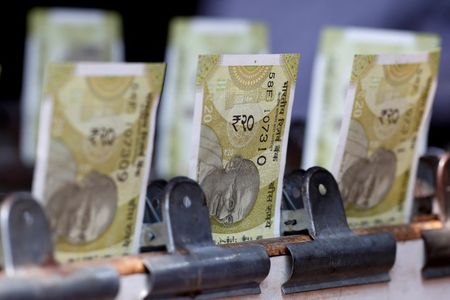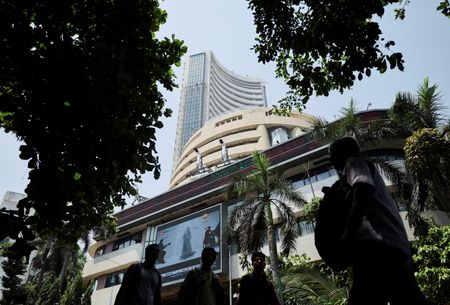By Jaspreet Kalra
MUMBAI(Reuters) – Dollar demand from foreign banks and a large local corporation, alongside tepid risk appetite amid lingering uncertainty on U.S. trade policies, drove the rupee lower to a closely watched support level on Monday.
The South Asian currency fleetingly weakened past the 86 level in early trading and before paring losses to last quote at 85.97 as of 10:45 a.m., down 0.2% on the day.
Asian currencies were mostly weaker, while the dollar index was hovering just shy of the 98 mark.
President Donald Trump on Saturday threatened to impose a 30% tariff on imports from Mexico and the European Union starting on August 1, adding them to a list of countries that have received letters from the U.S. declaring country-specific levies.
India and Taiwan are among the large U.S. trading partners that have not yet received letters declaring the tariff rate.
A constant barrage of tariff-related headlines, along with the expectations that these are merely negotiating tactics, has dampened market reactions, such as the euro, which slipped just 0.1% on Monday.
“The game between Trump and the market is subject to multiple equilibria,” BofA Global Research said in a note.
The note added that it would be key to watch how much renewed tension risky assets can withstand before correcting lower, and how much pain Trump would tolerate before de-escalation occurs.
Asian equities were mostly in the green on Monday, while futures for the euro-area and U.S. stock gauge were in the red. India’s benchmark equity indexes, the BSE Sensex and Nifty 50, each was down about 0.3% on the day.
Dollar bids from foreign banks, likely on behalf of custodial clients, also exerted pressure on the rupee, a trader at a private bank said.
India’s consumer inflation data for June is due after FX market hours on Monday.
(Reporting by Jaspreet Kalra; Editing by Vijay Kishore)









